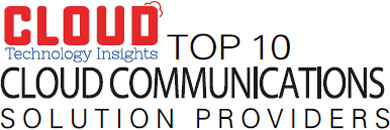Organizations need to define the business value of data and the impact of their loss. Protection of data starts with the question of who has access to it. Data accessible through the internet is the most vulnerable
Fremont, CA: In terms of management, access, and scalability of the business, the cloud offers significant benefits over the traditional platforms. However, the cloud also brings along certain security risks. Traditionally, these risks are associated with denial of service, data loss, malware, and system vulnerabilities. Recent studies have shown that the new threats in the cloud environment are centered around decisions on cloud strategy and implementation.
Data Breaches
Data breaches are cybersecurity incidents or simple attacks where sensitive or confidential information is viewed, stolen, or used by an unauthorized individual. This can damage the reputation of the company as a result of mistrust from customers and partners. It can also lead to the loss of Intellectual Property (IP) to competitors, impacting the release of a new product. In the long run, data breaches can have a significant impact on the company's brand and market value.
 Organizations need to define the business value of data and the impact of their loss. Protection of data starts with the question of who has access to it. Data accessible through the internet is the most vulnerable. Encryption techniques can help protect data, but also make the interface less user-friendly. Implementing a robust and well-tested incident response plan that considers the cloud provider and data privacy laws can help data breach victims recover from the impacts.
Organizations need to define the business value of data and the impact of their loss. Protection of data starts with the question of who has access to it. Data accessible through the internet is the most vulnerable. Encryption techniques can help protect data, but also make the interface less user-friendly. Implementing a robust and well-tested incident response plan that considers the cloud provider and data privacy laws can help data breach victims recover from the impacts.
Misconfiguration and Inadequate Change Control
Setting up computing assets incorrectly leaves them vulnerable to malicious activity. Unsecured data storage elements or containers, unpatched systems and logging or monitoring left disabled, unchanged default credentials and configuration settings, excessive permissions, standard security controls left disabled, and unrestricted access to ports and services are some examples of asset misconfigurations. The impact of these misconfigurations is dependent on the nature of misconfiguration and the time taken to detect and resolve it.
Cloud-based resources can be dynamic and complex and are also challenging to configure. Traditional change management controls and approaches are inadequate for the cloud. Organizations should look to embrace automation and technologies that can continuously scan for misconfigured resources and remediate problems in real-time.
Inadequate Cloud Security Architecture and Strategy
Implementing proper security against cyber attacks is one of the most significant challenges organizations face while migrating IT infrastructure to the public cloud. Migrating to the cloud is not as simple as the traditional lift and shift methods. Secure movement, deployment, and operation in the cloud are dependent on proper security architecture and strategy. Successful cybersecurity attacks can lead to financial loss, reputational damage, legal repercussions, and fines.
See Also :- Top Cloud Technology Solution Companies